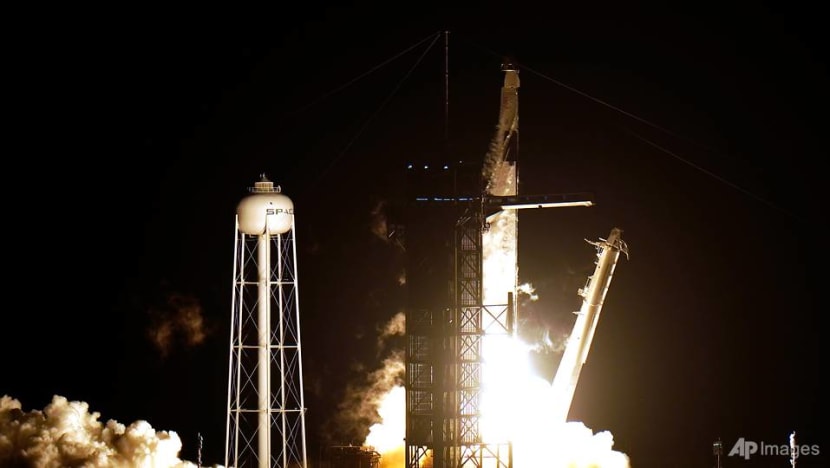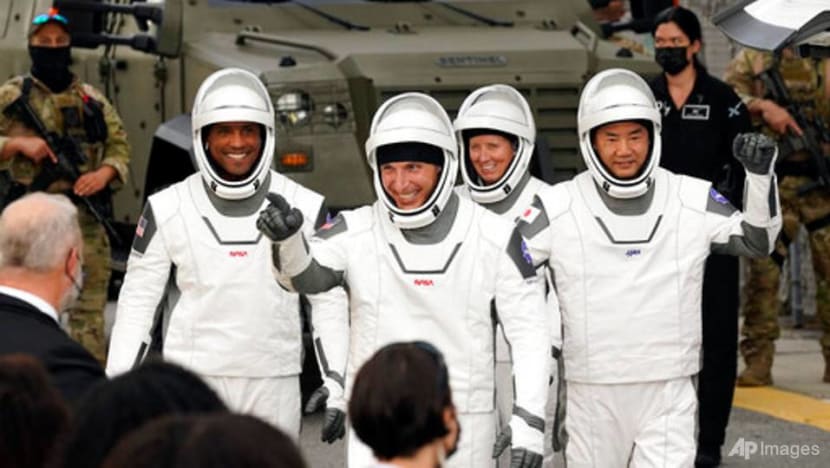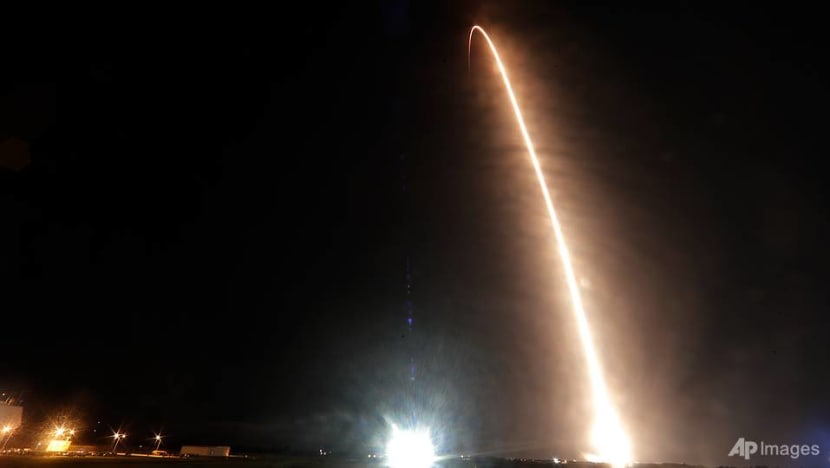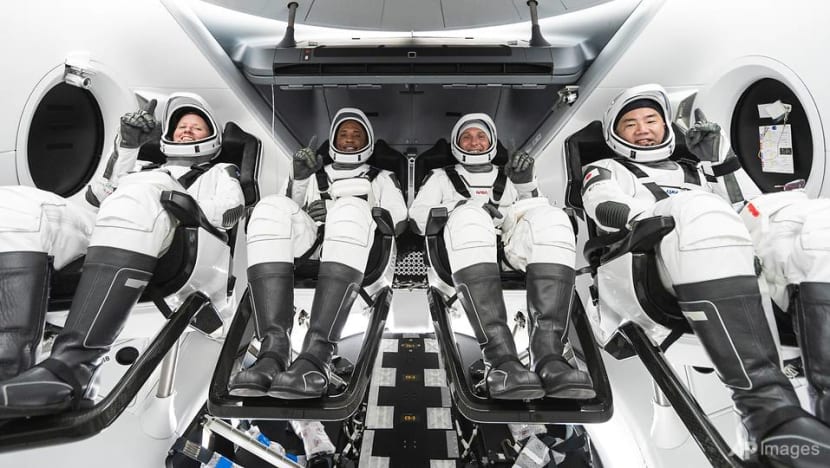SpaceX launches second crew, regular station crew flights begin

A SpaceX Falcon9 rocket, with the Crew Dragon capsule attached, lifts off from Kennedy Space Center's Launch Complex 39-A on Nov 15, 2020, in Cape Canaveral, Florida. (Photo: AP Photo/Chris O'Meara)
CAPE CANAVERAL, Florida: SpaceX launched four astronauts to the International Space Station on Sunday (Nov 15) on the first full-fledged taxi flight for NASA by a private company.
The Falcon rocket thundered into the night from Kennedy Space Center with three Americans and one Japanese, the second crew to be launched by SpaceX. The Dragon capsule on top - named Resilience by its crew in light of this year’s many challenges, most notably COVID-19 - was due to reach the space station on late Monday and remain there until spring.
Sidelined by the virus himself, SpaceX founder and chief executive Elon Musk was forced to monitor the action from afar. He tweeted that he “most likely” had a moderate case of COVID-19. NASA policy at Kennedy Space Center requires anyone testing positive for coronavirus to quarantine and remain isolated.
Sunday’s launch follows by just a few months SpaceX’s two-pilot test flight. It kicks off what NASA hopes will be a long series of crew rotations between the US and the space station, after years of delay. More people means more science research at the orbiting lab, according to officials.

“This is another historic moment,” NASA Administrator Jim Bridenstine said on Friday. But he noted: “Make no mistake: Vigilance is always required on every flight.”
US President-elect Joe Biden hailed the launch on Twitter as a "testament to the power of science and what we can accomplish by harnessing our innovation, ingenuity, and determination," while President Donald Trump called it "great".
The flight to the space station - 27 and a half hours door to door - should be entirely automated, although the crew can take control if needed.
With COVID-19 still surging, NASA continued the safety precautions put in place for SpaceX’s crew launch in May. The astronauts went into quarantine with their families in October. All launch personnel wore masks, and the number of guests at Kennedy was limited. Even the two astronauts on the first SpaceX crew flight stayed behind at Johnson Space Center in Houston.
Vice President Mike Pence, chairman of the National Space Council, travelled from Washington to watch the launch.
Pence, who attended the launch with his wife Karen, called it a "new era in human space exploration in America".
The Pences joined Bridenstine and his wife Michelle to watch the launch, clapping as the rocket lifted off.

Outside the space center gates, officials anticipated hundreds of thousands of spectators to jam nearby beaches and towns.
NASA worried a weekend liftoff - coupled with a dramatic nighttime launch - could lead to a superspreader event. They urged the crowds to wear masks and maintain safe distances. Similar pleas for SpaceX’s first crew launch on May 30 went unheeded.
RIGHT TRAJECTORY
The capsule successfully separated from the second stage of the rocket and, according to a SpaceX team member speaking over radio, had achieved "nominal orbit insertion".
That means the capsule is currently on the right trajectory to reach the ISS.
The crew will dock at their destination at around 11 pm on Monday night (noon Singapore time on Tuesday).
The three-men, one-woman crew led by Commander Mike Hopkins, an Air Force colonel, named their capsule Resilience in a nod not only to the pandemic, but also racial injustice and contentious politics.
It is about as diverse as space crews come, including physicist Shannon Walker, Navy Commander Victor Glover, the first black astronaut on a long-term space station mission, and Japan’s Soichi Noguchi, who became the first person in almost 40 years to launch on three types of spacecraft.
READ: SpaceX announces partnership to send four tourists into deep orbit
They rode out to the launch pad in Teslas - another Musk company - after exchanging high-fives and hand embraces with their children and spouses, who huddled at the open car windows. Musk was replaced by SpaceX President Gwynne Shotwell in bidding the astronauts farewell.
Besides its sleek design and high-tech features, the Dragon capsule is quite spacious - it can carry up to seven people. Previous space capsules have launched with no more than three. The extra room in the capsule was used for science experiments and supplies.
The four astronauts will be joining two Russians and one American who flew to the space station last month from Kazakhstan.
The first-stage booster - aiming for an ocean platform several minutes after lift-off - is expected to be recycled by SpaceX for the next crew launch. That is currently targeted for the end of March, which would set up the newly launched astronauts for a return to Earth in April. SpaceX would launch yet another crew in late summer or early fall.

SpaceX and NASA wanted the booster recovered so badly that they delayed the launch attempt by a day, to give the floating platform time to reach its position in the Atlantic over the weekend following rough seas.
Boeing, NASA’s other contracted crew transporter, is trailing by a year. A repeat of last December’s software-plagued test flight without a crew is off until sometime early next year, with the first astronaut flight of the Starliner capsule not expected before summer.
NASA turned to private companies to haul cargo and crew to the space station, after the shuttle fleet retired in 2011. SpaceX qualified for both. With Kennedy back in astronaut-launching action, NASA can stop buying seats on Russian Soyuz rockets. The last one cost US$90 million.
The commander of SpaceX’s first crew, Doug Hurley, noted it’s not just about saving money or easing the training burdens for crews.
“Bottom line: I think it’s just better for us to be flying from the United States if we can do that,” he told The Associated Press last week.










